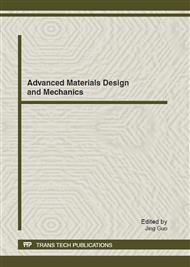p.107
p.111
p.116
p.122
p.128
p.132
p.136
p.144
p.149
Growth and Spectral Properties of Ho3+,Tm3+ Codoped BaY2F8 Laser Crystal
Abstract:
Ho3+:Tm3+:BaY2F8(Ho:Tm:BYF) laser crystal was grown by Czochralski method. The technical parameters as follows: the seeding temperature is 955°C; the pulling rate is 0.5mm/h; the rotation rate is 5rad/min; the cooling rate is 15°C/h; the period of growth is 6d. According to the spectra of crystal sample, the strongest absorption peak exists at 781nm, and the absorption cross section is 6.16×10-21cm2. While the strongest emission peak exists at 2056nm with the FWHM of 38nm, and the emission cross section is 4.05×10-21cm2, and the emission mechanism at 2056nm was analyzed based on energy level diagram of Ho3+ and Tm3+ ions.
Info:
Periodical:
Pages:
128-131
Citation:
Online since:
September 2012
Authors:
Price:
Сopyright:
© 2012 Trans Tech Publications Ltd. All Rights Reserved
Share:
Citation:


